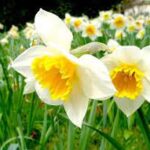**Psychological Impact of Flower-Shaped Cat Trees on Feline Companions**

—
The enchanting allure of flower-shaped cat trees extends beyond their visual appeal; it delves into the intricate realm of a cat’s psychological well-being. Let’s explore the profound psychological impact these whimsical structures have on our feline friends.
**1. **Creating a Sense of Territory:**
– *Vertical Dominance:* Flower-shaped cat trees, with their elevated perches and climbing vines, tap into a cat’s instinctual desire for vertical territory. This elevated vantage point allows cats to survey their surroundings, instilling a sense of dominance and security.
**2. Curbing Boredom and Stress:**
– *Interactive Engagement:* The dynamic play opportunities provided by flower-shaped cat trees address a cat’s need for mental stimulation. Interactive features like climbing vines, multi-petal platforms, and hidden compartments combat boredom and reduce stress by keeping their minds active.
**3. Fostering Independence:**
– *Secluded Hideaways:* The cozy nooks and crannies within flower-shaped cat trees serve as secluded retreats. Cats, as naturally independent creatures, appreciate having private spaces where they can observe without being observed, promoting a sense of autonomy.
**4. Satisfying Natural Instincts:**
– *Scratching Surfaces:* The inclusion of sisal rope and other textures on flower-shaped cat trees fulfills a cat’s instinct to scratch. This not only aids in maintaining healthy claws but also provides an outlet for expressing natural behaviors, reducing stress and promoting contentment.
**5. Multi-Sensory Enrichment:**
– *Biophilic Elements:* Flower-shaped cat trees that integrate planters or floral motifs contribute to biophilic enrichment. The presence of nature-inspired elements indoors engages a cat’s senses, creating a harmonious environment that mirrors their natural surroundings.
**6. Elevated Observation Points:**
– *Territorial Surveillance:* Cats are territorial animals, and having elevated platforms on a cat tree allows them to survey their territory. This satisfies their inherent need to monitor their surroundings, enhancing feelings of security and confidence.
**7. Encouraging Playful Interaction:**
– *Dynamic Play Elements:* The incorporation of interactive toys and dynamic play elements encourages cats to engage in playful behavior. This not only provides physical exercise but also fosters a positive outlet for excess energy, reducing instances of destructive behavior.
**8. Providing a Comfortable Retreat:**
– *Luxurious Lounges:* Orchid-inspired lounges with plush cushions create comfortable retreats for cats. These cozy spaces offer a sense of security and warmth, contributing to a cat’s emotional well-being and providing a designated area for relaxation.
**9. Aromatherapeutic Effects:**
– *Scented Attractions:* Flower-shaped cat trees that include catnip or valerian-infused elements offer aromatherapeutic benefits. These scents can induce a euphoric response, promoting relaxation and positive feelings for the cat.
**10. Strengthening the Human-Animal Bond:**
– *Shared Spaces:* Flower-shaped cat trees placed in communal areas strengthen the bond between cats and their human companions. Creating shared spaces fosters a sense of togetherness and provides opportunities for positive interaction.
In conclusion, the psychological impact of flower-shaped cat trees on feline companions is multi-faceted. From addressing instinctual needs to fostering a sense of security and engagement, these whimsical structures play a crucial role in enhancing the overall mental well-being of our cherished cats. Embrace the beauty of this symbiotic relationship between design and psychology, creating a space where your feline friend can thrive both physically and emotionally.


